THE NEW PAINTING? OTHER TERRITORIES OF EXPERIMENTATION
Jan 10, 2025
art madrid
Painting, in its most classical sense, has traditionally been considered a representative medium of human creativity, defined by the support, pigments, and figure. However, contemporary art has pushed this concept toward a radical redefinition. What was once a two-dimensional surface limited to visual representation has transformed into a multisensory experience involving space, time, and interaction. In this context, expanded painting emerges as a field of experimentation that invites us to reconsider the boundaries between disciplines and traditional forms of art-making.
In its origins, painting was conceived as an act of representation; a visual medium whose primary function was to capture reality through images. From the Renaissance to Impressionism, artists developed techniques and approaches aimed at increasingly accurate depictions of nature, the human body, and light.
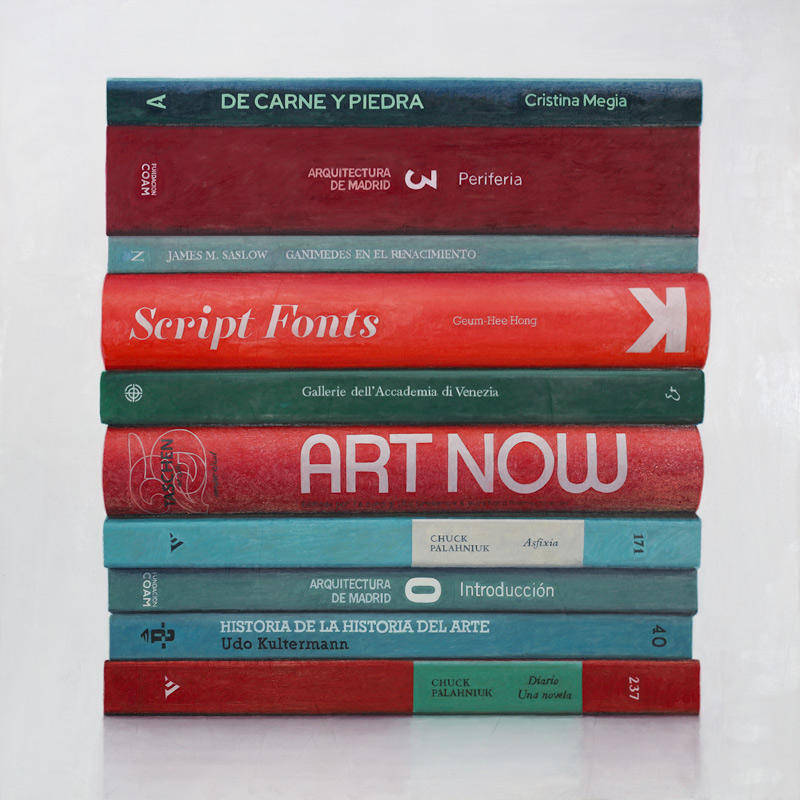
The history of painting was marked by an obsession with perspective, proportion, and harmony. However, as we move into the 20th century, avant-garde movements began to challenge these conventions. Cubism, Surrealism, and Abstraction introduced new ways of conceiving the pictorial act, which was no longer confined to imitating reality but aspired to deconstruct and reconfigure it. This break from visual tradition was merely the beginning of a series of transformations that would lead painting into previously unexplored territories.
Expanded painting, a term coined to describe this evolution, refers to the broadening of the medium’s possibilities in both materiality and context. Experimentation with new supports, the fusion of media, and the dissolution of boundaries between painting, sculpture, architecture, and performance are some of the most prominent aspects of this trend. Instead of being confined to canvas or panel, contemporary artists have incorporated materials such as wood, plastic, metal, glass, and even digital elements.
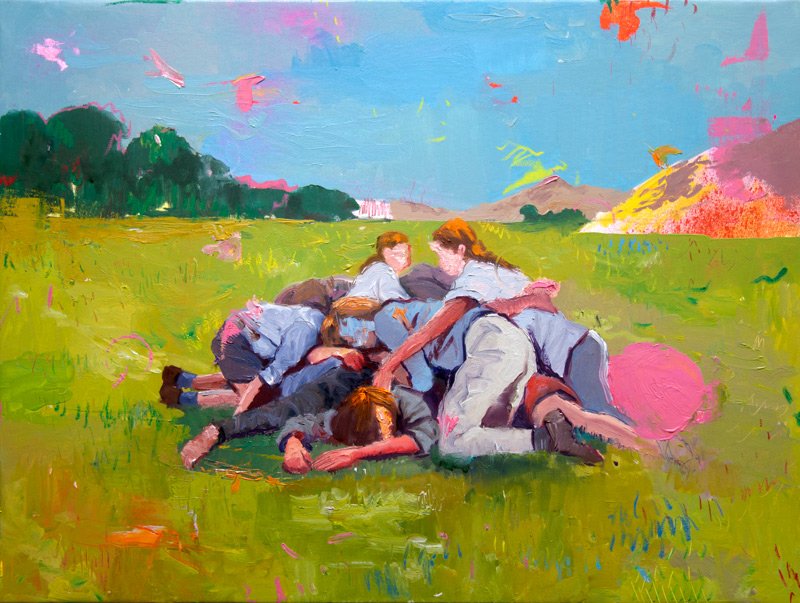
The flat surface has given way to a broader, more three-dimensional concept of space, where painting inhabits not only the support but also the surrounding space, inviting direct interaction from the viewer. Many of these breakthroughs can be seen in the works of artists who use heavy and textured materials to endow their two-dimensional pieces with a sculptural quality. The notion of painting as an object has disappeared in favor of a spatial experience encompassing both the visible and the conceptual.
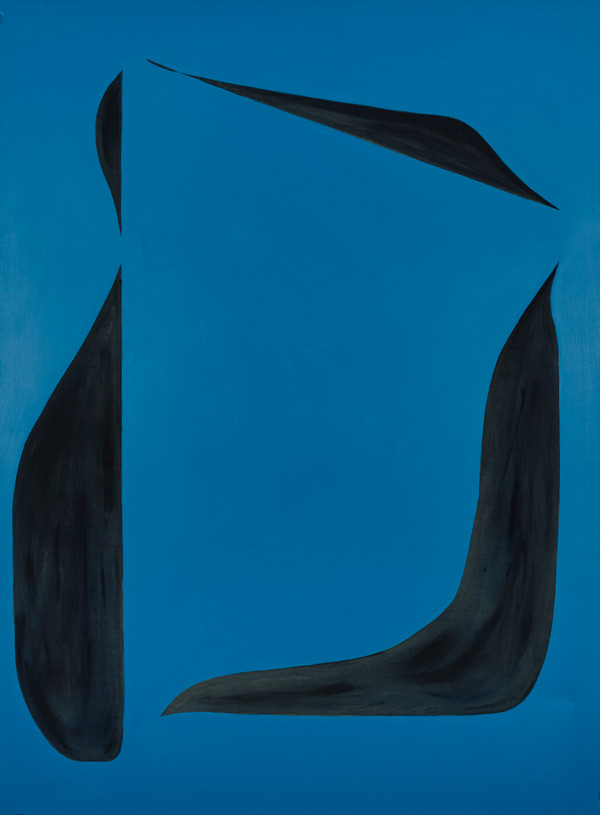
In this same vein of boundary expansion is Luis Miguel Rico, who, through a series of material explorations combining pigments, fabrics, and textures, addresses the relationship between color and space, seeking a balance between the emotional and the formal. His work focuses on transforming the traditional canvas, inviting viewers to reconsider the potential of painting as a three-dimensional expressive medium.
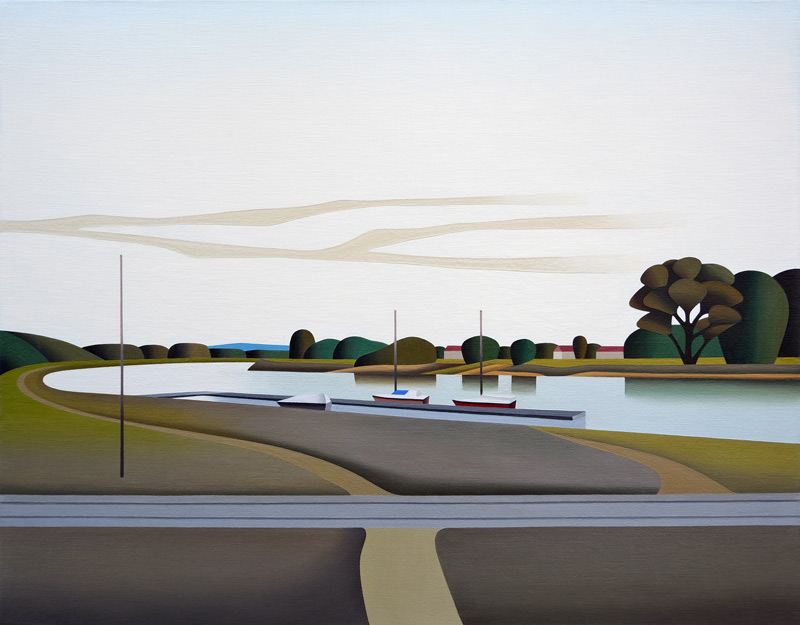
Jan Schüler, on the other hand, acts as a bridge between classical and contemporary painting. His introspective approach, where portraits and landscapes transcend mere visual representation, highlights the viewer’s interaction with the work. Through direct gazes that meet the viewer’s eyes, the characters in his portraits challenge the traditional conception of painting as a passive medium, inviting emotional and personal reflection.
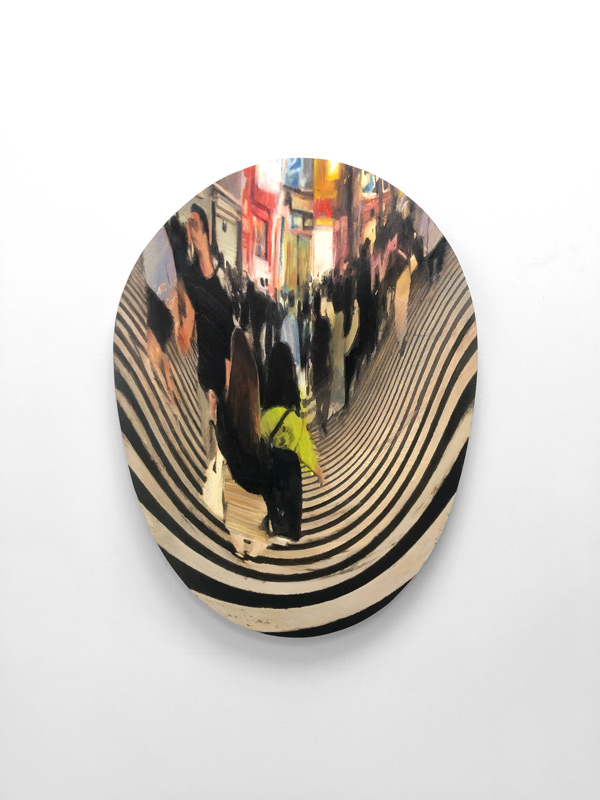
César Goce, blending graffiti influences with traditional painting, brings expanded painting into his own dimension by integrating urban art with academic techniques. His approach aligns with the dissolution of disciplinary boundaries, incorporating graffiti, a contemporary medium, within a studio format that could be considered traditional. This reflects the process of expanded painting, where contemporary artists blur the lines of mediums to create a hybrid experience.
The expansion of the pictorial medium pertains not only to the choice of materials but also to the redefinition of what we understand as "painting." In this context, painting is no longer limited to representing the real or visible but becomes a field for exploring the invisible, the subjective, and the emotional. Instead of working within a single perspective or defined style, contemporary artists operate with multiple languages, where process and creative action become essential elements of the work. Spontaneity, error, improvisation, and the deconstruction of gesture have been integrated into pictorial practice, generating works that invite not only contemplation but also active reflection on the nature of art.
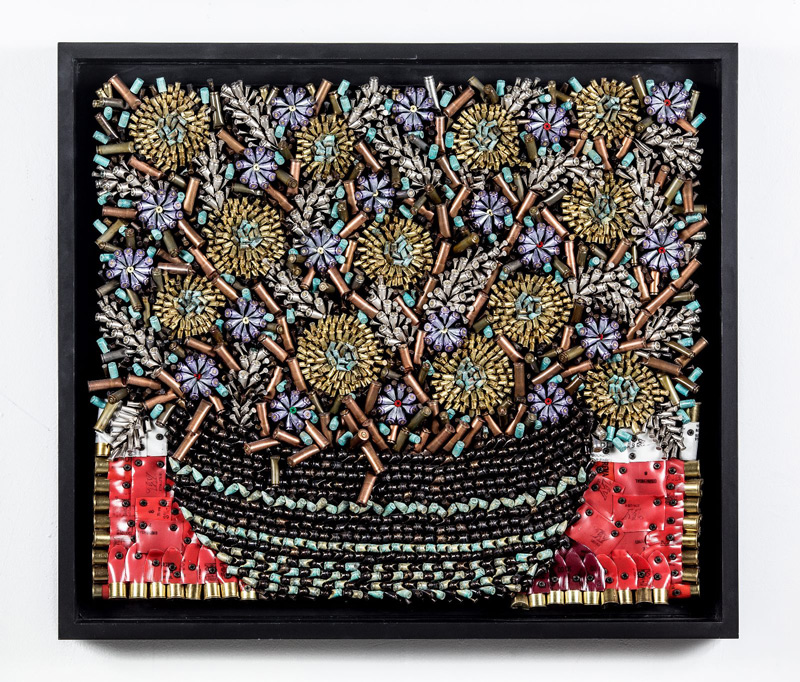
Federico Uribe, through his assemblages of everyday objects, offers a radically different vision of expanded painting. While he does not adhere directly to traditional painting, his use of unconventional materials such as bullet casings and pieces of colored pencils creates a point of contact between painting, sculpture, and nature. Uribe’s reinterpretation of common objects relates to the expansion of painting beyond the canvas, suggesting a new way of thinking about the medium and its function.
The use of unconventional supports and the incorporation of performative elements are also fundamental aspects of expanded painting. By moving painting out of its traditional space, artists invite the viewer to engage more actively and participate in the work.
The advent of digital technologies has provided artists with a new palette of possibilities. Painting, understood as an action or process, can now simultaneously involve both digital and traditional creation, demonstrating that painting need not be bound to a single medium. This digital integration not only expands the painter’s tools but also raises questions about the very essence of art: must painting retain its physical and material character to remain painting, or can it transcend into the virtual and ephemeral without losing its essence?
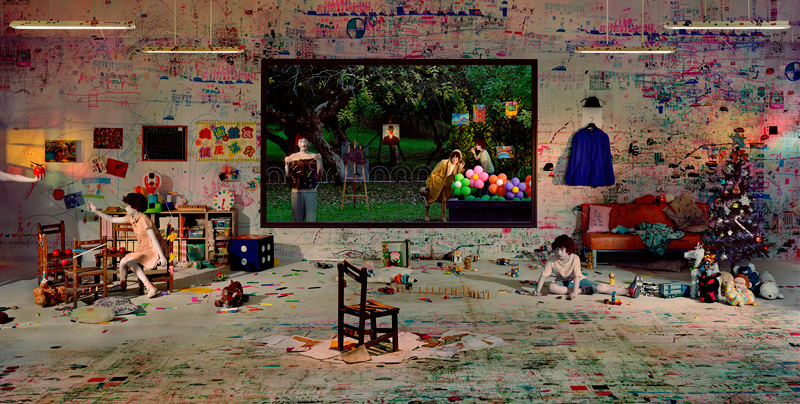
Chou Ching-Hui’s photographic approach also aligns with the idea of expanding the boundaries of traditional art. His transition from photojournalism to artistic photography shows how the photographic medium can interact with pictorial works, creating a new way of experiencing and reflecting on reality. Ching-Hui’s transformation of the real into the conceptual in his projects is a clear manifestation of expanded painting, now integrating other visual disciplines.
In this sense, expanded painting is defined not only by technical or material innovation but by a more philosophical approach to art. By eliminating the barriers between disciplines and expanding the boundaries of the medium, contemporary artists challenge our conceptions of art’s role in society. Painting, rather than being a closed and static process, becomes an open practice, in constant dialogue with its environment and its audience. Painting is no longer just a transcription of reality but an active intervention in it.

In the case of Alexander Grahovsky, his surrealist pictorial treatment merges the classical with the contemporary, combining figurative elements with the dreamlike. His work invites continual reflection on what lies beyond the surface, dissolving the boundaries of representation in an approach that resonates with the concept of expanded painting.
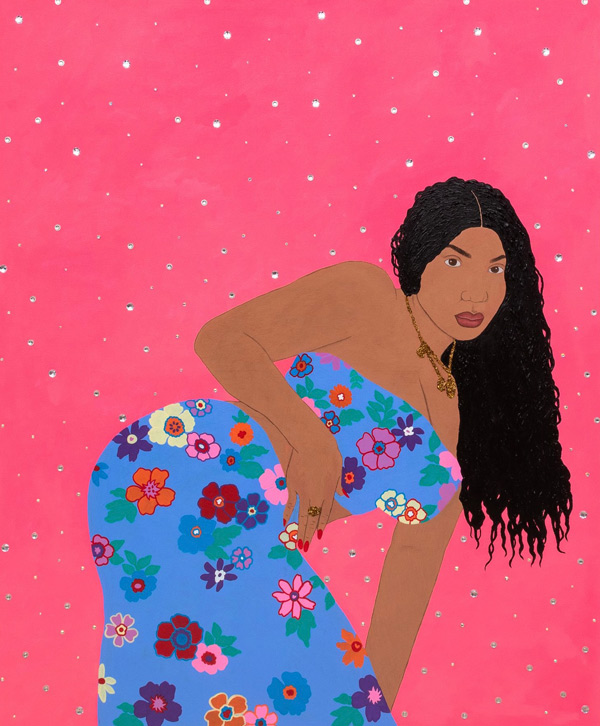
Meanwhile, Tiffany Alfonseca transcends the traditional sense of painting as well. Her vibrant portraits not only depict Afro-diasporic communities but also provoke reflection on themes of race, identity, and representation. Through her work, painting becomes a vehicle for amplifying historically silenced voices, transforming the pictorial act into a social and political intervention that invites viewers to experience more than just the visual.
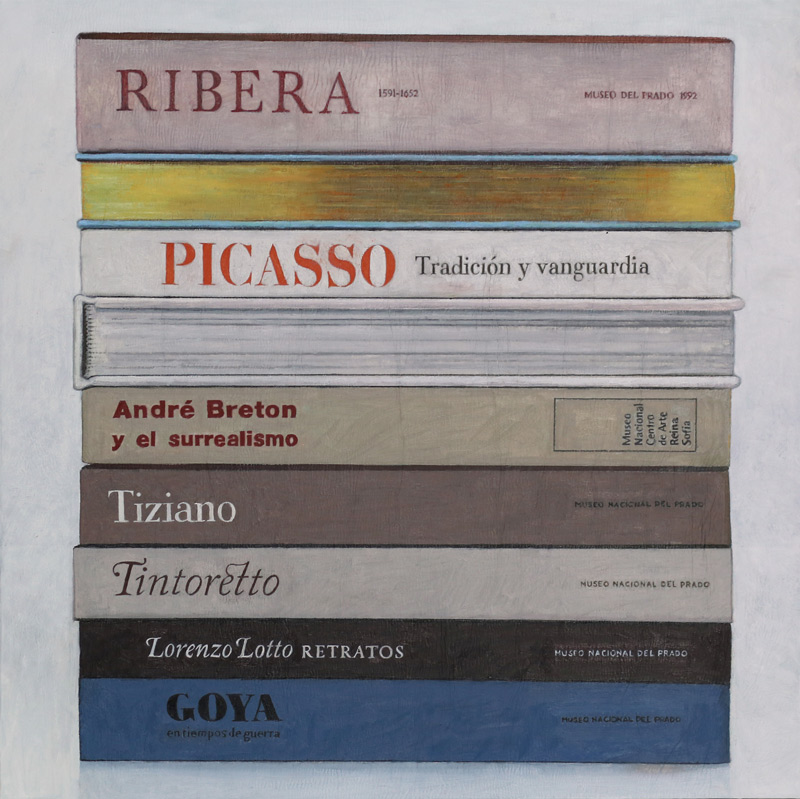
Paco Díaz, with his conceptual and reflective work, emphasizes the relationship between viewer and artwork, creating space for reflection on the personal, collective, and political. By focusing on the everyday, he invites us to reconsider life’s simplest elements through painting imbued with emotion and meaning. His compositions play with nostalgia and memory, creating works that are both a tribute to the commonplace and an exploration of the self.
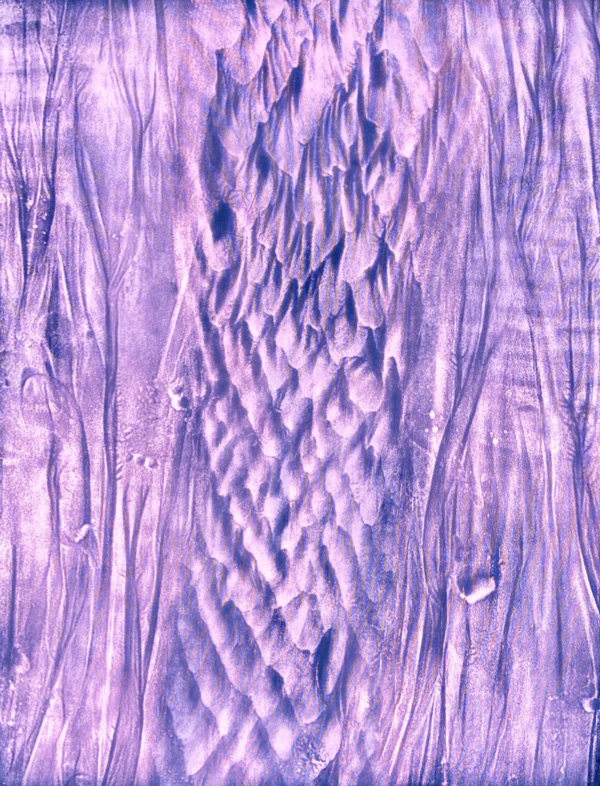
Iyán Castaño demonstrates how painting adapts to the contemporary era, where printmaking techniques, direct landscape intervention, and the exploration of social and personal themes offer a broad field for artistic reflection. By working with the changing conditions of the sea, he integrates nature into his work in a way that blurs the lines between painting and environmental intervention.
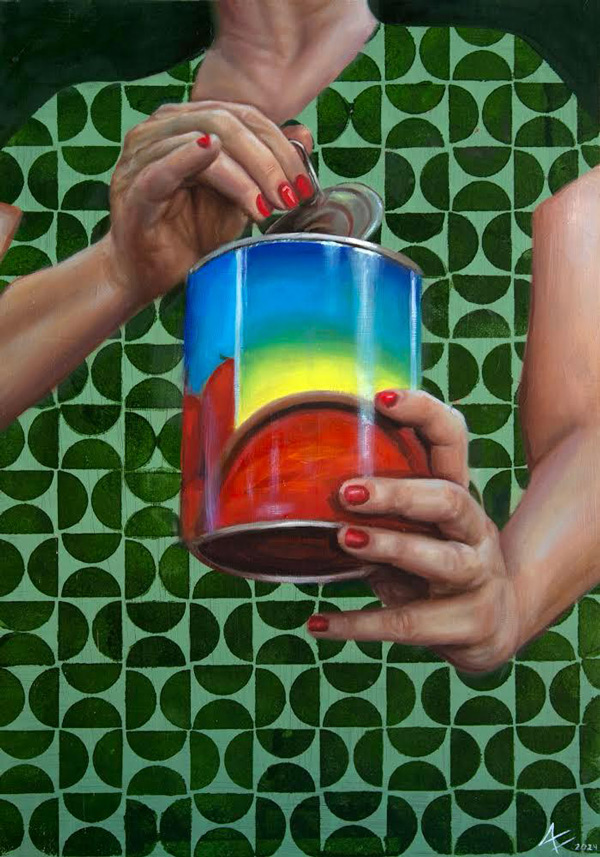
Antonio Ovejero’s unique fusion of kitsch and popular elements challenges traditional conceptions of painting. His work explores tensions between the banal and the artistic, creating a space where kitsch acquires aesthetic and critical relevance. Ovejero prompts viewers to question the relationship between art and popular culture, reflecting on nostalgia, consumerism, and the aesthetics of the everyday.
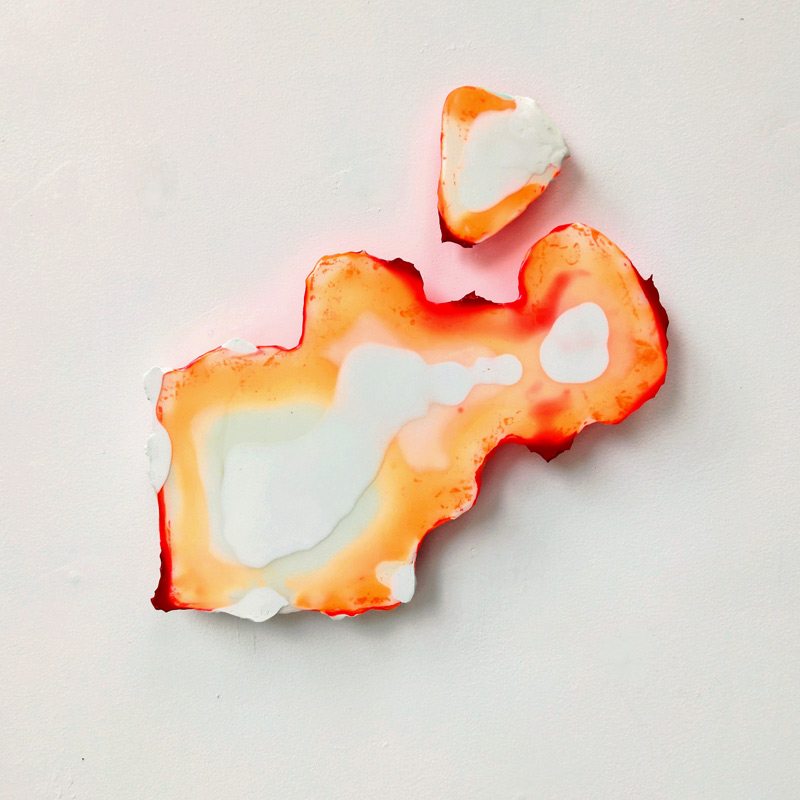
Paco Dalmau, on the other hand, delves into the relationship between color and form in contemporary painting. His work is characterized by a profound exploration of these elements, where structure and composition become vehicles of communication. Dalmau deconstructs traditional painting, leading viewers to a sensory experience where color and form are perceived not only visually but also emotionally, expanding the medium’s boundaries toward greater viewer interaction.
Painting has ceased to be a medium confined to visual representation and has become a discipline in constant expansion. By questioning what we understand as pictorial art, expanded painting not only broadens the boundaries of its discipline but also invites deeper reflection on the role of art in understanding the world. In conclusion, contemporary painting has evolved into a space of unprecedented creative freedom. Expanded painting redefines the boundaries between disciplines, materials, and meanings, inviting both artists and viewers to participate in an active reflection on the nature of art and its relationship with society. Far from being a closed discipline, painting today presents itself as an open field, in constant dialogue with the present and its infinite possibilities.


















